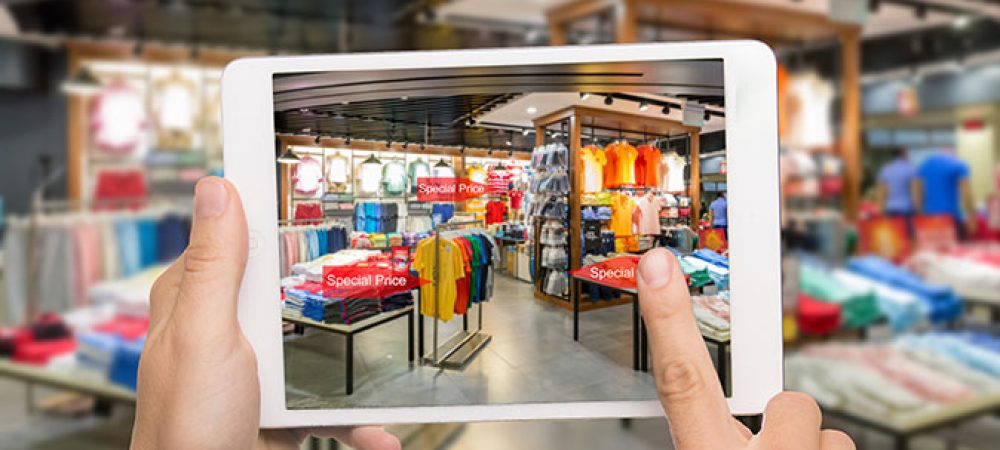With the retail industry up in the air as a result of the turmoil caused by COVID-19, confusion surrounding the future of the high street remains. Rohit Gupta, Cognizant’s Head of Product and Resources, suggests there is light at the end of the tunnel and retailers must utilise technology to rebuild the high street.
The Coronavirus pandemic has left no industry untouched, but retail has been one of the hardest hit, with brands left relying entirely on their e-commerce offering and customer loyalty just to stay afloat in these extremely challenging times.
As a result of further lockdown measures, consumers have once again turned to online shopping, not only for items like clothes, but also for basic necessities such as groceries. Even post-lockdown, it is unlikely that the high street will ever be the same again. In fact, it was suggested at the Retail Expo virtual conference earlier this year that high street retailers will be required to change radically in the aftermath of the pandemic.
That is not to say that consumers will never return to the physical store, but retailers need to do more to get them there. In order to do so, technology will play an enormous and vital role.
Enticing customers back to physical stores
Now, more than ever, retailers need to find effective ways to attract customers back into the store and away from the comfort and ease of online shopping. In the post-COVID era, brands need to consider the impact that consumer spending has on the economy.
Although many brands have decided to reopen their high street doors, there are still many that have decided not to, with one-fifth of UK retailers not planning to reopen after Coronavirus. In light of this, the future high street looks like it will be made up of fewer, but much larger stores, with the concept of the mega store potentially becoming much more familiar to UK shoppers. These will provide an end-to-end experience for customers, whether that is with in-store cinema screens, restaurants, or even beauty bars. However, these mega stores will not be physical stores as we know them, as social distancing and hygiene will remain top priority.
Smaller stores that are left unopened will then be used as ‘dark stores’ – more convenient and local warehouses used for fulfilment to improve the e-commerce home delivery experience. We are already seeing this trend come to life as Amazon has entered into talks with a shopping centre giant about transforming current department store spaces into warehouses for online orders.
How technology can help improve health and hygiene in-store
Social distancing, although a virtually unknown expression just a few months ago, is now a critical prevention strategy for people around the globe. For many, it is vital that the brands they choose to shop with are able to provide the experience they expect in-store, while allowing shoppers to maintain social distancing with others. This will be key moving forward in maintaining customer loyalty, and technology will be vital in helping retailers to ensure health and hygiene remains a top priority.
For example, Blockchain will become an increasingly valuable tool for tracing the journey of products, so that customers have much better visibility over where an item has come from and where it has been on its journey. IoT will also be crucial in providing sensor data to monitor whether customers are adhering to social distancing. This will be a much quicker, easier and more accurate method than watching shoppers with human staff.
Furthermore, there have already been numerous innovations in virtual fitting rooms delivered by Augmented Reality (AR) in recent years to allow customers to try on clothes virtually, and a more widespread adoption of AR by retailers was already on the rise before the COVID-19 outbreak. This is particularly true of retailers selling footwear, jewellery or optical retailers. For example, Gucci added an AR function to its mobile app to enable customers to try on its popular Ace Sneakers virtually. The adoption of these technologies is a little more challenging when it comes to clothing. There is a need to give not just fitting accuracy, but a realistic idea of the look and feel of the product, all of which can be affected by factors such as lighting, materials and patterns.
Even prior to the pandemic, it was expected that the global virtual fitting room market would reach over US$10 billion by 2026. With increased regulation to manage hygiene and social distancing measures in-store, we expect that this figure has already risen and will only continue to do so as these innovations become all the more important given some people might no longer feel safe trying on clothes in fitting rooms. Since AR, AI and VR innovations can address some customer concerns around health and hygiene, we will likely see an increase in the adoption of such technologies into the fitting room.
To allow customers to try on items virtually, retailers should consider introducing technology which scans an actual product or barcode in-store on customers’ smartphones to bring up details of the product as well as a visualisation of it on a 3D avatar. The customer can then browse for different sizes and colours and select the best fit. This could allow customers to ‘try on’ as many products as they want without any timing constraints. It would also allow social distancing rules to be followed more easily. Contactless fitting rooms like this could be the bridge between the physical fitting and the convenience of online shopping.
Turning uncertainty into opportunity
The pandemic has thrown the globe into disarray and while none of us can predict the future, the one on our horizon now is very different to the one we anticipated just a few months ago. Though full of uncertainty, there is an opportunity for retailers to find their feet again, but alongside emerging technologies like Blockchain and AR.



